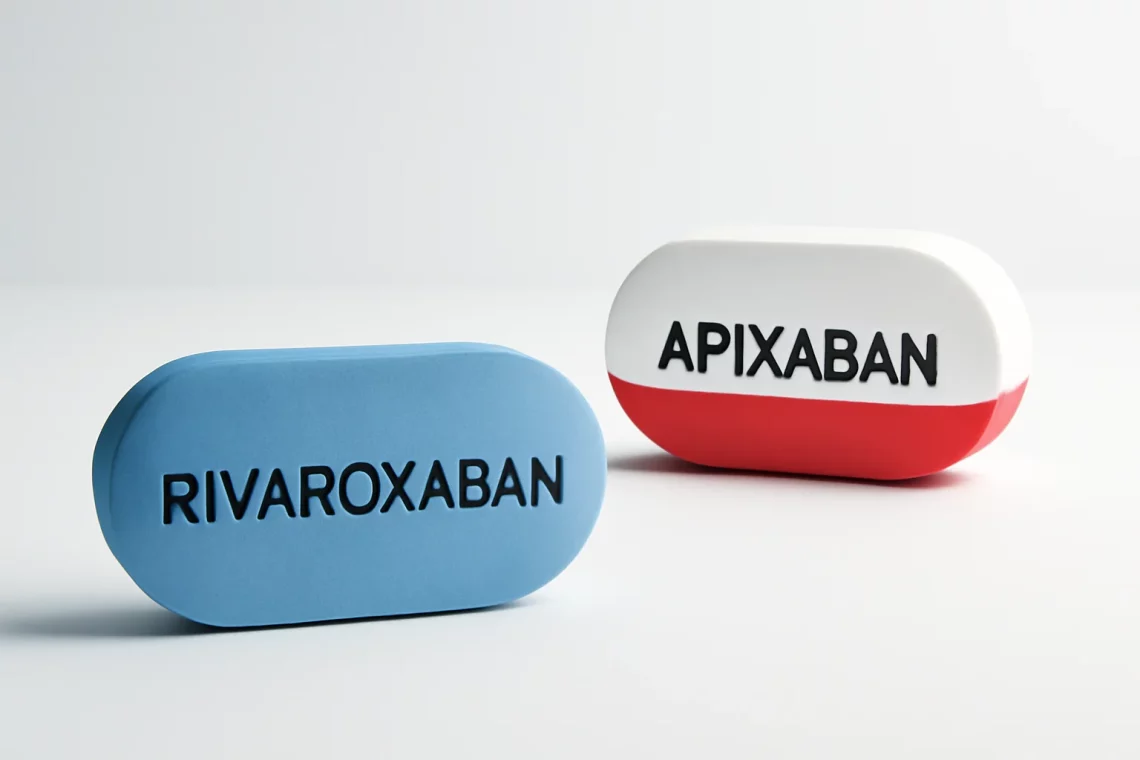
Rivaroxaban vs Apixaban: Choosing the Right Anticoagulant for You
When considering anticoagulants for the prevention and treatment of thromboembolic diseases, Rivaroxaban and Apixaban stand out as two of the most discussed options. Both medications belong to a class known as direct oral anticoagulants (DOACs), which have revolutionized the management of various conditions such as atrial fibrillation, deep vein thrombosis (DVT), and pulmonary embolism (PE). These medications work by inhibiting specific factors in the blood coagulation pathway, ultimately reducing the risk of blood clots.
The choice between Rivaroxaban and Apixaban often depends on multiple factors, including patient-specific characteristics, underlying health conditions, and potential drug interactions. Both drugs offer distinct advantages and disadvantages that can impact their effectiveness and safety profiles. Patients and healthcare providers must weigh these factors carefully to make informed decisions regarding anticoagulation therapy. Understanding the nuances of how these drugs work, their dosing regimens, and their side effects can significantly influence treatment outcomes.
In this article, we will delve deeper into the specifics of Rivaroxaban and Apixaban, examining their mechanisms of action, dosing guidelines, side effects, and considerations for usage, to help clarify which option may be more suitable for various patient scenarios.
Mechanisms of Action
Rivaroxaban and Apixaban share a similar mechanism of action, as they both target Factor Xa, a crucial component in the coagulation cascade. Factor Xa plays a pivotal role in the conversion of prothrombin to thrombin, which is essential for the formation of fibrin clots. By inhibiting Factor Xa, both Rivaroxaban and Apixaban effectively reduce thrombin generation, leading to a decreased likelihood of clot formation.
Rivaroxaban is an oral anticoagulant that selectively inhibits Factor Xa and is often utilized in various clinical scenarios, such as the treatment of DVT and PE, and for stroke prevention in patients with non-valvular atrial fibrillation. The drug exhibits dose-dependent anticoagulant effects, which means that higher doses result in a more significant reduction of thrombin generation. It is primarily metabolized in the liver, and its elimination is influenced by renal function, making it essential to assess kidney health when prescribing it.
Apixaban, on the other hand, also acts as a selective Factor Xa inhibitor but has been noted for its more predictable pharmacokinetic profile. This predictability allows for a fixed dosing regimen without the need for routine monitoring, which is a significant advantage for many patients. Apixaban is commonly used for similar indications as Rivaroxaban, including stroke prevention in atrial fibrillation and the treatment of DVT and PE. Moreover, it has a lower risk of bleeding complications, which is an important consideration in anticoagulant therapy.
Understanding the mechanisms of action of Rivaroxaban and Apixaban can significantly aid healthcare providers in selecting the appropriate medication for individual patients based on their health status and treatment goals.
Dosing Guidelines and Administration
When it comes to dosing, both Rivaroxaban and Apixaban have specific guidelines that healthcare providers must follow to ensure optimal therapeutic outcomes. Rivaroxaban is typically administered once daily for most indications, with the exception of certain cases, such as initiation of treatment for DVT or PE, where a higher loading dose may be prescribed. The standard dose for stroke prevention in atrial fibrillation is 20 mg once daily, although lower doses, such as 15 mg, may be recommended for patients with renal impairment.
In contrast, Apixaban is usually taken twice daily, which can enhance its anticoagulant effect and minimize the risk of thrombus formation. For stroke prevention in patients with atrial fibrillation, the standard dose is 5 mg twice daily, but it may be reduced to 2.5 mg twice daily for those meeting specific criteria, such as older age or lower body weight.
Both medications can be taken with or without food, which provides flexibility in administration. However, it’s essential to maintain consistent dosing times to ensure stable drug levels in the bloodstream. Patients should also be counseled on the importance of adherence to their prescribed regimen to maximize the benefits of therapy and minimize the risk of complications.
Healthcare providers must consider individual patient factors, such as age, weight, renal function, and potential drug interactions when determining the appropriate dosing for Rivaroxaban or Apixaban. This personalized approach to dosing can help optimize treatment efficacy and safety.
Side Effects and Safety Profiles
As with any medication, both Rivaroxaban and Apixaban come with potential side effects that patients and healthcare providers should be aware of. The most common side effect associated with both drugs is an increased risk of bleeding. This can manifest as easy bruising, prolonged bleeding from cuts, or more severe complications such as gastrointestinal bleeding or intracranial hemorrhage.
Rivaroxaban has been associated with a higher incidence of gastrointestinal bleeding compared to Apixaban, which may be attributed to its dosing regimen and pharmacokinetics. Therefore, healthcare providers must assess the patient’s gastrointestinal risk factors when considering Rivaroxaban for anticoagulation therapy.
On the other hand, Apixaban’s safety profile is generally considered to be more favorable, with studies indicating a lower risk of major bleeding events. This has made Apixaban a preferred option for many patients, particularly those who may be at higher risk for bleeding complications.
While both medications are effective anticoagulants, it is vital to monitor patients closely for any signs of bleeding and to educate them about the symptoms they should report to their healthcare provider.
In addition to bleeding risks, both Rivaroxaban and Apixaban can cause other side effects, including nausea, headache, and fatigue. However, these are typically mild and may not require discontinuation of therapy.
Ultimately, the choice between Rivaroxaban and Apixaban should consider the individual’s risk factors, preferences, and the specific clinical scenario.
Considerations for Use
When determining whether to prescribe Rivaroxaban or Apixaban, healthcare providers must consider several factors that may influence the choice of anticoagulant. Patient-specific characteristics, such as age, weight, renal function, and the presence of comorbidities, are critical in making informed decisions about anticoagulation therapy.
Patients with renal impairment may require dose adjustments or careful monitoring when using Rivaroxaban due to its renal excretion pathway. In contrast, Apixaban has a more favorable profile for patients with reduced kidney function, making it a safer choice in these scenarios.
Moreover, patients’ preferences play a crucial role in treatment decisions. Some patients may prefer a once-daily dosing regimen like that of Rivaroxaban, while others may favor the twice-daily schedule of Apixaban. The convenience of not needing routine monitoring with these medications can also significantly impact adherence to therapy.
Healthcare providers should also assess potential drug interactions, as both Rivaroxaban and Apixaban can interact with other medications, leading to increased bleeding risks or reduced efficacy. Comprehensive medication reviews can help identify potential concerns and guide appropriate therapy adjustments.
In conclusion, the choice between Rivaroxaban and Apixaban is multifaceted and should be tailored to the individual patient’s circumstances. By considering mechanisms of action, dosing regimens, side effects, and patient preferences, healthcare providers can make informed decisions that optimize treatment outcomes.
**Disclaimer:** This article is for informational purposes only and is not intended as medical advice. Please consult your healthcare provider for personalized guidance regarding any health concerns.




